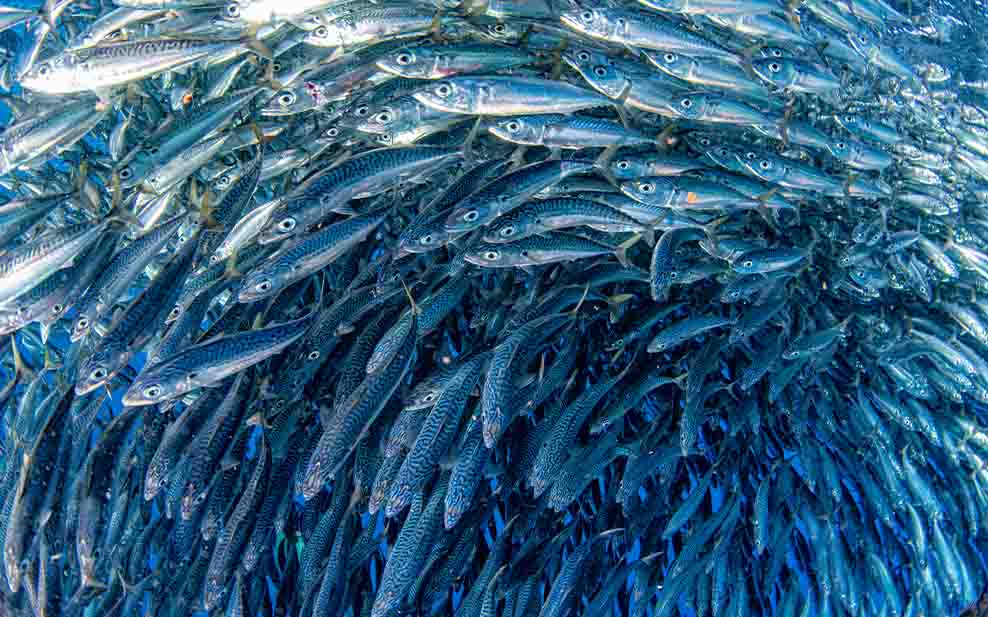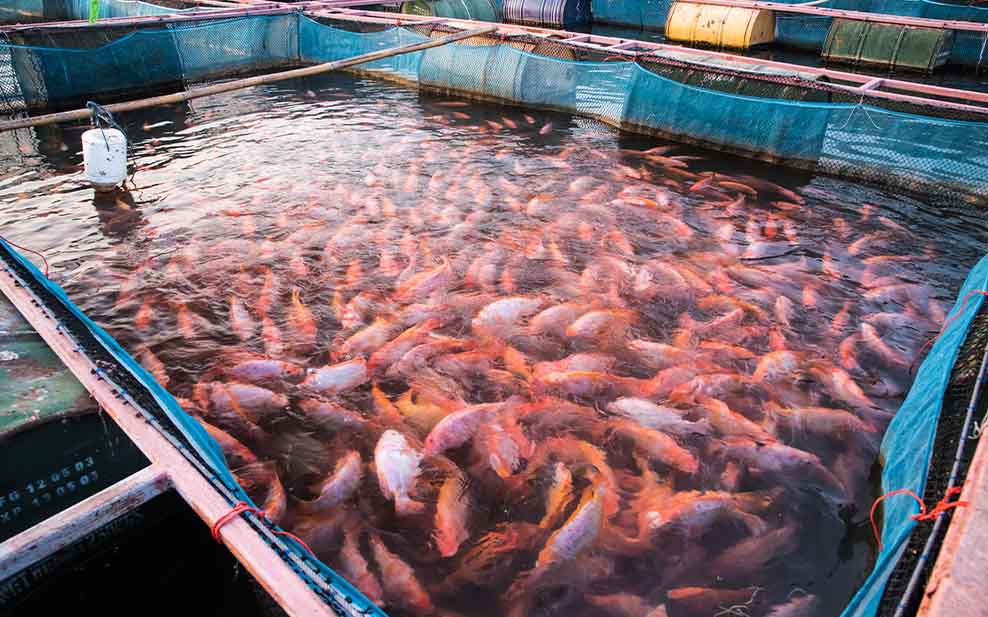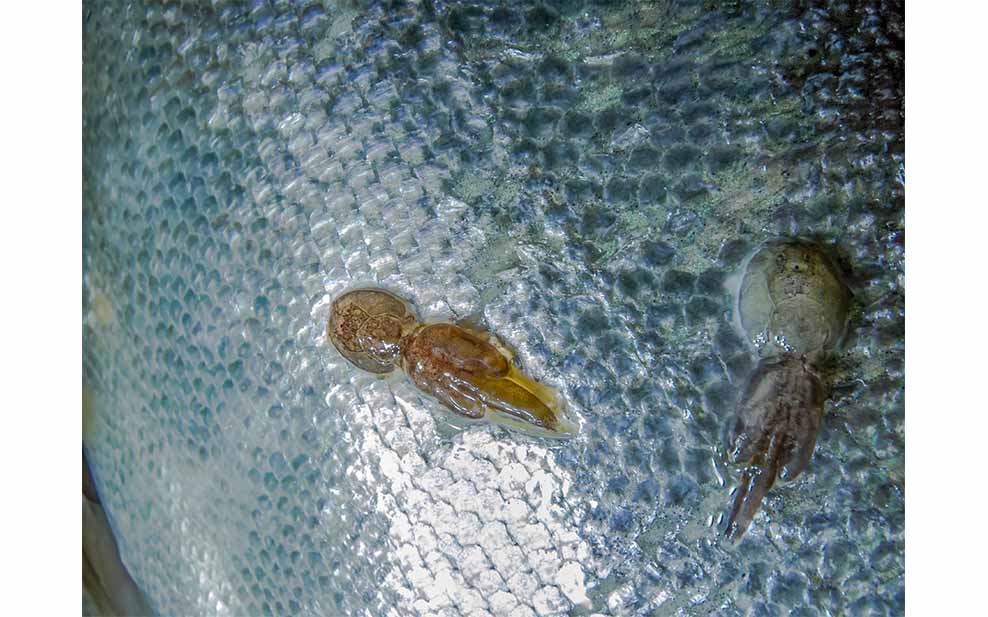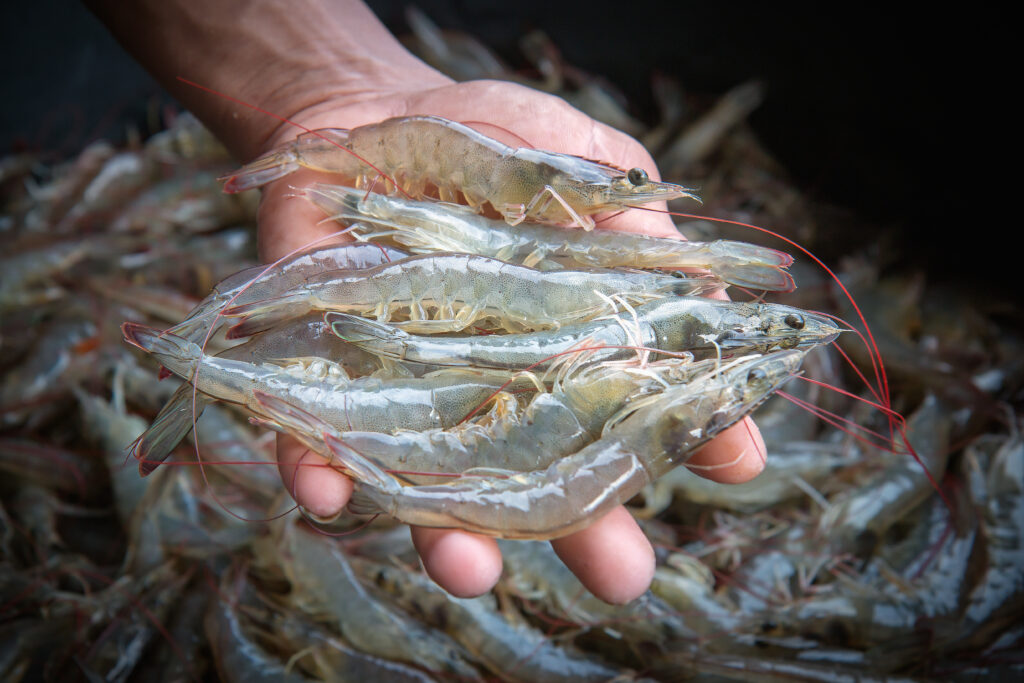
Rotten Fish: 5 reasons why farmed seafood is not as good for the planet as you might think
Overfishing is one of the most pressing environmental problems of our time. According to the Food and Agriculture Organisation of the United Nations (FAO), over a third of all wild fish stocks are overfished. And this is likely an underestimate given the lack of data in parts of Asia and Africa that likely have significant levels of overfishing and fish stock depletion.
In the face of this burgeoning catastrophe, one thing that is often framed as a solution (or at least, a mitigator) is aquaculture; the farming of fish and other commonly eaten marine organisms. The theory goes that by sourcing from farmed stock, we can still get our seafood fix without putting pressure on beleaguered wild stocks. Since the 1990s, aquaculture has become a dominant form of seafood production, increasing by a staggering 527% between 1990 and 2018 while wild-caught seafood has largely plateaued.
Taking this at face value, you could be forgiven for thinking that buying farmed seafood may absolve us of our collective sin of ocean degradation. Sadly, this is often pretty far from the truth. Mainstream aquaculture in fact has plenty of its own environmental problems, some of which actually harm wild fish stocks even further.
WELL, here is a short-list of the issues that make aquaculture, in its current form, a net-negative on our planet:
1. Feeding farmed fish with wild ones


Most of the more commonly eaten fish species, like salmon and tuna, are carnivores. As several of them are also top predators, that means that they need disproportionately large amounts of animal-based feed in order to grow and put on weight. For example, producing just one tonne of farmed bluefin tuna requires fifteen tonnes of feed.


A common tactic to meet these high food demands is to use forage fish – small, abundant, low market-value species like sardines and anchovies– as feed. Unfortunately, as these can’t be easily raised in captivity, they are instead taken from the wild, often at unsustainably high volumes. Indeed, overfishing for aquaculture feed led to a crash in sardine numbers along the west coast of America in 2015. There is also an emerging market for non-target species caught during fishing (bycatch) for use as aquaculture feed, creating an incentive for fishermen to keep bycatch for financial gain.
“The problem is that we capture big fish for the market and capture small fish for farming. So we are exploiting both big and small fish” says Loby Hau, Senior Conservation Officer for WWF-Hong Kong.
For some species at least, the aquaculture industry has been reducing the share of fish feed made from wild fish since 1995. But for others like salmon, the amount is still unsustainably high.
2. Spreading diseases to wild fish


In industrial farming, hundreds or thousands of animals are crammed together in small facilities, providing a perfect situation for the rapid spread of disease. And the same holds true for aquaculture. Salmon farms for instance are often plagued with sea lice –parasitic crustaceans that feed on fish skin and blood– which have been recorded on farms at concentrations 73 to 30,000 times higher than in the wild.

The disease impacts of aquaculture aren’t limited to the farms themselves. As the holding pens used are typically open-net pens, diseases can easily float into the surrounding water bodies and potentially infect wild species, which is particularly dangerous if they have not evolved immunity to them. For example, farms for non-native Atlantic salmon in Pacific Canada have been linked to the occurrence of 22 different salmon diseases, including ones that did not previously exist in the region. Similarly, the spread of sea lice from farms has been implicated in the mass death of juvenile wild salmon and the loss of entire salmon runs in the Vancouver Island area.
Although farms do use antibiotics to address this problem, not only do these often become less effective as diseases evolve resistance to them, but they can also be harmful to wild species too. Once again, salmon farming is the poster child for this, as treatments for sea lice have been indicated to be lethal to wild crustaceans.
3. Destroying habitats

Much like diseases, animal waste from aquaculture farms can float out and pollute wild habitats, helping to fertilise algae which then multiply into abnormally large, toxic algal blooms that deplete the surrounding water of oxygen. Sometimes however, habitat destruction from aquaculture is more direct.


One of the most infamous examples of this is prawn farming, which has destroyed large areas of mangrove forest to make way for prawn ponds. Worse still, waste and pollutant accumulation in ponds can lead to disease outbreaks that quickly render them unviable, leading to even more mangroves being destroyed for new prawn ponds. Globally, 20-35% of all mangroves have been lost in the past 50 years and according to one study, aquaculture is estimated to have been responsible for 47% of losses from 2000-2016.
This destruction also further endangers wild fish species –including commercially important ones– for which mangroves are important breeding grounds. Moreover, it worsens the effects of climate change as not only are mangroves important carbon sinks, but they also help to shelter coastal communities from typhoons and storm surges.
4. Introducing invasive species
As well as diseases and waste, aquaculture farms can also be a source of invasive species, as the industry relies significantly on the shipping and farming of non-native fish species around the world.

A prime example of this is the tilapia. Originally from Africa, this freshwater fish has been introduced to at least 114 different countries (including Hong Kong) via the aquaculture industry. Highly adaptable, they can easily become established in an ecosystem should they escape from farms. Once established, they can outcompete native species for resources and sometimes eat their eggs and young. Also, because young tilapia shelter inside their mothers’ mouths, they receive a greater protection from predators that allows populations to multiply quickly. As a result, it is listed as one of the 100 worst invasive species and has become the dominant fish species in some areas.
5. Farming fish caught from the wild
The word ‘farmed’ carries the assumption that the animals in question were raised on a farm from birth. But in aquaculture, this isn’t always the case. While some species might be raised in farms for most of their lives, they might be too difficult to breed in captivity, meaning that they have to be sourced from the wild, including sometimes from already overexploited wild stocks.

One example of this is the European eel. This species has a complicated life history in which breeding adults migrate from rivers in Europe to the east coast of North America to spawn. After hatching, the young then spend two years travelling back across the Atlantic before swimming upriver to continue their development. Replicating these breeding conditions would be prohibitively difficult in captivity. So instead, so-called ‘farmed’ European eels are caught from the wild when young and transported to aquaculture farms in Asia to be reared to adulthood. Due in part to this overexploitation, a species that was once one of the most common in European freshwater ecosystems is now critically endangered.
Solutions?
It’s tempting to say (as a certain Netflix documentary does) that we must stop our seafood consumption altogether and bring down the whole industry. While that argument is praiseworthy (we certainly vouch for the benefits of a vegan lifestyle) seafood remains a vital source of nutrition for about 3.3 billion people, and an employer for 59.5 million as of 2018 (20.5 million of which work in aquaculture), making decoupling from the system so abruptly difficult. Moreover, ending consumption of seafood –one of the less environmentally damaging sources of protein– so abruptly could lead inadvertently to a shift towards far worse ones like beef.

Rather than dismiss the industry altogether, many experts are suggesting an approach of reforming the industry to abide by more stringent management practices. Many experts point to following the guidance of the Aquaculture Stewardship Council (ASC) who have created a special kind of certification to ensure a business is following best practices. This certification is awarded to farms that meet an extensive list of environmental criteria, such as preventing escapes, responsible feed sourcing and ceasing unnecessary chemical use. As a consumer that means if you are going to choose farm raised seafood choosing ASC certified products is a decent start.
For real change to take place in the industry, however, sustainable business models must be proven economically viable. Among the intriguing projects looking to make this shift possible is WWF’s Bankable Nature Solutions (BNS) initiative, which aims to create scalable business models and support local fisherman.
In Asia, one BNS project of note by WWF-Hong Kong is a pilot project –supported by the KPMG Foundation– to develop a local aquaculture business operation, consulting local fishermen on their practices and referring to globally recognised aquaculture standards to develop the most sustainable model. WWF-Hong Kong will also engage with potential private sector partners to try and attract their interest in investing in and scaling up the business model. If this project succeeds, then Hong Kongers will be able to buy sustainably farmed seafood more easily, with the added benefit of cutting out the considerable carbon footprint of importing 90% of its seafood. WWF’s work in Hong Kong may provide a model the industry can replicate on a larger scale.
“Our endgame is really to supply 100% sustainable seafood locally. That would be ideal” says Chloe Cheung, Regional Lead for Bankable Nature Solutions APAC at WWF-Hong Kong.
So the next time you are buying seafood, think twice and consider the implications above.
Written exclusively for WELL, Magazine Asia by Thomas Gomersall

Thank you for reading this article from WELL, Magazine Asia. #LifeUnfiltered.
Connect with us on social for daily news, competitions, and more.





